Arby’s Classic Roast Beef Sandwich isn’t just a fast-food staple—it’s a legend. For decades, this soft, sesame seed bun piled high with thinly sliced beef has captured the hearts (and cravings) of millions. It’s the kind of sandwich that brings with it a wave of nostalgia, a whiff of mall food courts, road trip pit stops, and late-night cravings solved in a drive-thru lane. But beneath its warm, meaty simplicity lies a tangled—and at times bizarre—history you probably never expected.
How did a fast-food sandwich that once cost more than four Big Macs end up in the wallets of value hunters everywhere? Why do some longtime fans swear it tastes different now? And what’s the real story behind the gelatinous broth the meat arrives in? Let’s just say there’s more than meets the bun.
The truth is, the Classic Roast Beef Sandwich has been at the center of everything from food safety concerns to strange lawsuits and even one jaw-dropping, stomach-churning incident that’ll make you think twice before your next bite. And no, this isn’t fast-food fear-mongering—it’s fact-checking with a side of fries.
Whether you’re a die-hard Arby’s fan, a curious consumer, or someone who just loves digging into the curious backstories behind America’s most iconic eats, this list peels back the layers (of beef) to reveal the real story. Some facts will surprise you, a few might gross you out, and at least one might permanently change the way you feel about this beloved sandwich.
So buckle up your seatbelt—or maybe your napkin. Here are 14 shocking truths about Arby’s Classic Roast Beef Sandwich. You’ve had the sandwich. Now it’s time to digest the story.
1. Premium Pricing Shocked Early Customers
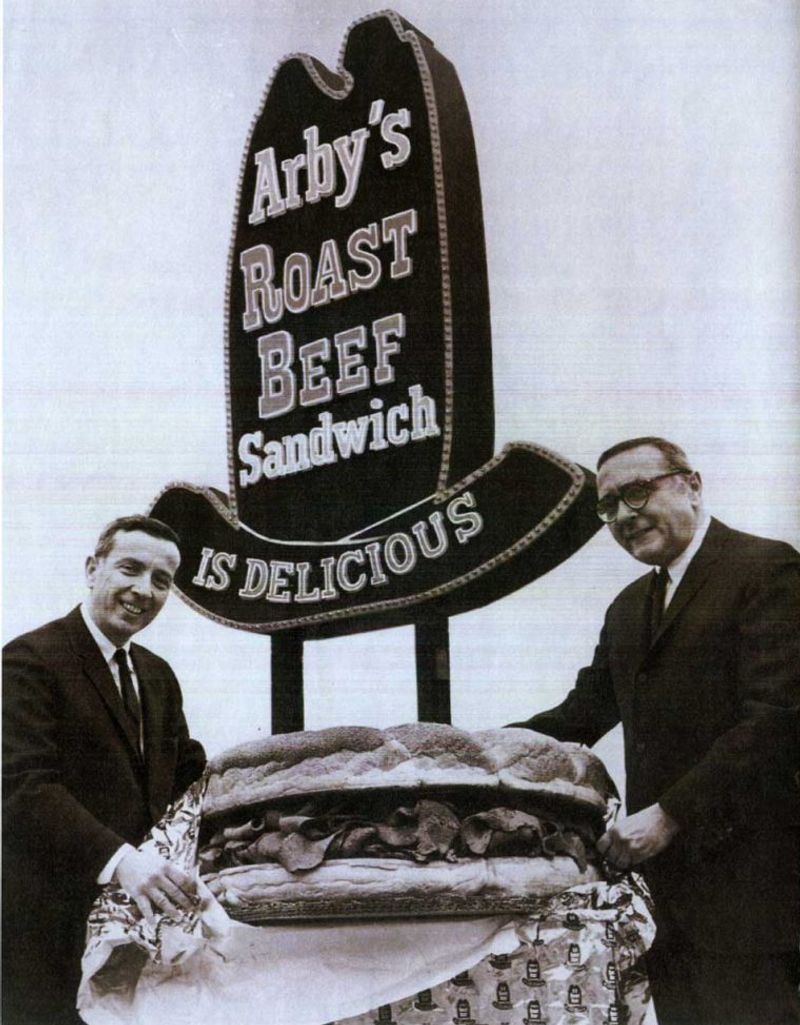
Back in 1964, Arby’s boldly entered the fast-food scene with a sandwich that cost nearly five times more than the competition. At 69 cents, the Classic Roast Beef was a luxury compared to McDonald’s 15-cent hamburger.
This premium pricing reflected Arby’s strategy to position itself as an upscale alternative to burger joints. Despite the higher cost, customers lined up for the novelty of thinly sliced roast beef.
The gamble paid off. Arby’s established itself as a different kind of fast food – one worth paying extra for when customers wanted something beyond the basic burger.
2. Real Meat, Not Liquid Goo
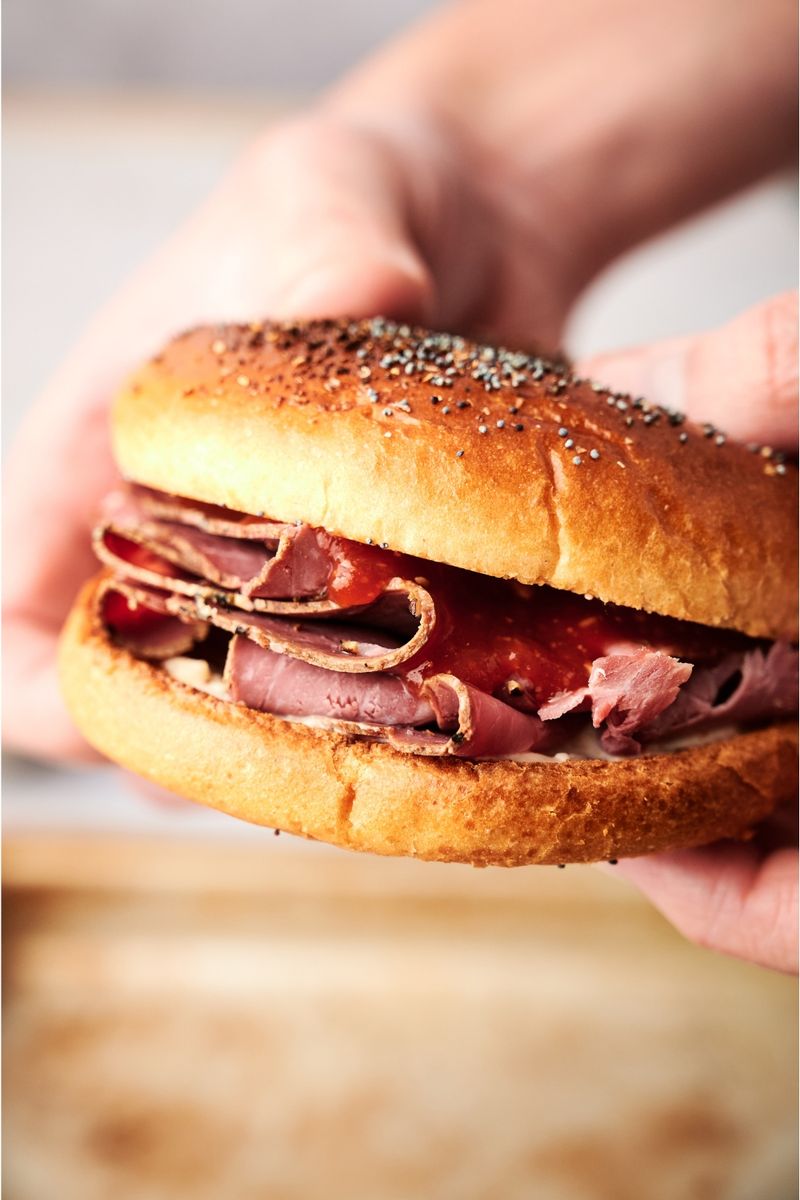
Urban legends about Arby’s roast beef being some kind of mysterious meat paste or liquid protein have circulated for decades. The truth? It’s actual beef – specifically, whole-muscle top round cuts.
The confusion likely stems from how the meat arrives at restaurants. Pre-cooked and packed in solution, the beef’s appearance before preparation might seem unusual to those unfamiliar with commercial food processing.
Arby’s has repeatedly defended its product against these persistent myths, even launching a transparency campaign with behind-the-scenes footage of their meat processing to reassure skeptical customers.
3. Not Your Organic Farmer’s Market Beef
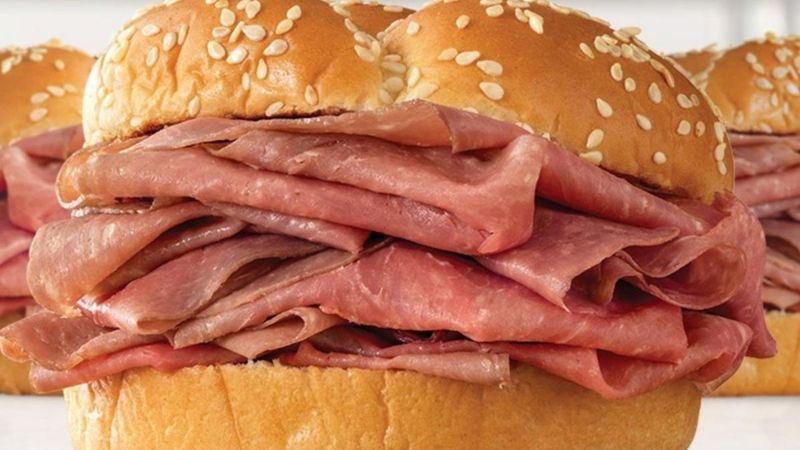
Health-conscious sandwich lovers might raise an eyebrow at this revelation. Arby’s roast beef isn’t marketed as antibiotic-free, setting it apart from the growing trend of “clean” fast food options.
While many competitors have pledged to remove antibiotics from their meat supply chains, Arby’s hasn’t made similar public commitments. This doesn’t mean their meat contains antibiotic residues – FDA regulations prevent that – but the animals may have received antibiotics during raising.
For consumers increasingly concerned about antibiotic resistance and seeking organic options, this might influence their fast-food choices.
4. The Mysterious Meat Jelly Revelation

Ever wonder why Arby’s roast beef stays so moist? The answer might surprise you. The beef arrives at restaurants pre-cooked and sealed in a gelatinous broth that resembles meat jelly.
This preservation method keeps the meat flavorful and tender until it’s ready to be heated and served. The gelatinous coating melts away during warming, infusing the beef with moisture and flavor.
While this might sound unappetizing, it’s actually a clever food science technique. Similar methods have been used in traditional cooking for centuries – think aspic or meat terrines – to preserve texture and taste.
5. Fresh-Sliced For Your Pleasure

The satisfying stack of paper-thin beef in your Arby’s sandwich wasn’t sliced hours ago and left sitting around. Each order triggers a fresh slicing of the roast, a practice that sets Arby’s apart from many competitors. Behind the counter, employees operate commercial-grade slicers, shaving the beef to that signature thin consistency just moments before assembly. This on-demand approach preserves moisture and prevents the meat from developing that stale, refrigerated taste. The sound of the slicer whirring away is practically an Arby’s soundtrack – a reassuring signal that your sandwich is being prepared with care.
6. Flavor Evolution Has Longtime Fans Nostalgic

Ask any Arby’s veteran and you might hear wistful sighs about how the roast beef “just doesn’t taste the same anymore.” These customers aren’t imagining things – the sandwich has indeed evolved over its nearly 60-year history.
Recipe adjustments, supplier changes, and cost-saving measures have subtly altered the flavor profile. Some long-time fans claim the roast beef was once more seasoned, while others insist it was juicier in decades past.
Food evolution is common in fast-food chains, but Arby’s devotees seem particularly sensitive to these changes, perhaps because the simplicity of the sandwich makes any alteration more noticeable.
7. Slicer Hygiene Sparked Health Scares
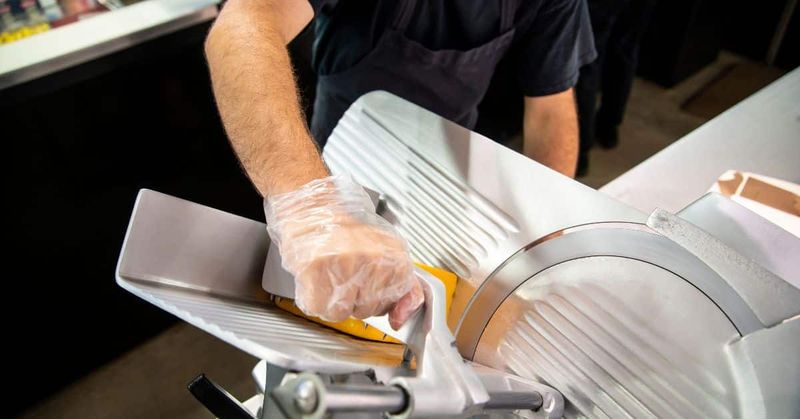
The very equipment that ensures fresh-sliced meat has occasionally been the culprit in foodborne illness outbreaks. Commercial meat slicers require rigorous cleaning protocols that, when neglected, can harbor dangerous bacteria like Salmonella.
Several instances of food poisoning have been traced back to improperly sanitized slicers at fast-food establishments, including some Arby’s locations. These incidents prompted tightened food safety regulations and more stringent cleaning requirements.
Today’s Arby’s locations follow strict sanitation schedules, but these historical cases serve as sobering reminders of the importance of food safety in fast-food preparation.
8. The Horrifying Finger Incident

In what might be the most stomach-turning fast-food incident ever, a customer allegedly discovered a human finger in their Arby’s sandwich in 2004.
The severed digit reportedly belonged to a worker who had injured themselves on the meat slicer. The gruesome discovery led to immediate health department intervention and a swift legal response. While extremely rare, such incidents can have devastating consequences for both the affected customer and the restaurant’s reputation.
Arby’s responded with enhanced safety protocols, but the story continues to circulate as one of the most disturbing fast-food legends – except this one actually happened.
9. Throwback Pricing Creates Feeding Frenzies
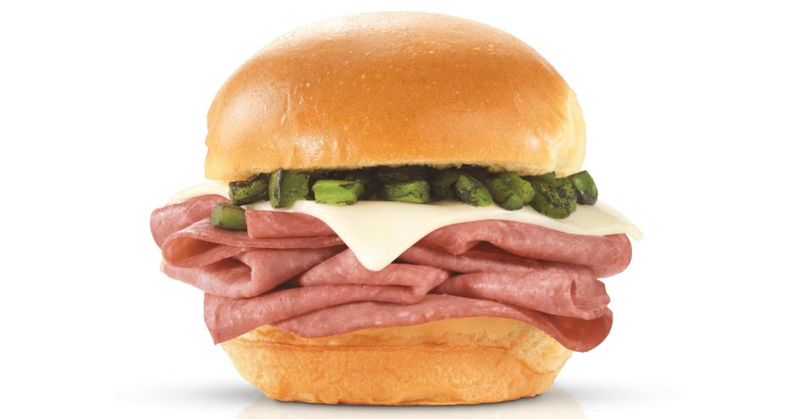
Occasionally, Arby’s turns back the clock with promotions offering their Classic Roast Beef at its original 1964 price of 69 cents. These limited-time offers create massive lines and social media buzz.
What’s fascinating is how a price that was once considered expensive is now viewed as an incredible bargain. These promotions tap into both nostalgia and value-hunting consumer behavior.
Marketing experts consider these anniversary specials brilliant strategy – they generate tremendous publicity while connecting newer customers to the brand’s heritage. The temporary loss-leader pricing pays for itself in brand awareness and customer loyalty.
10. Deal Hunters’ Secret Menu Staple
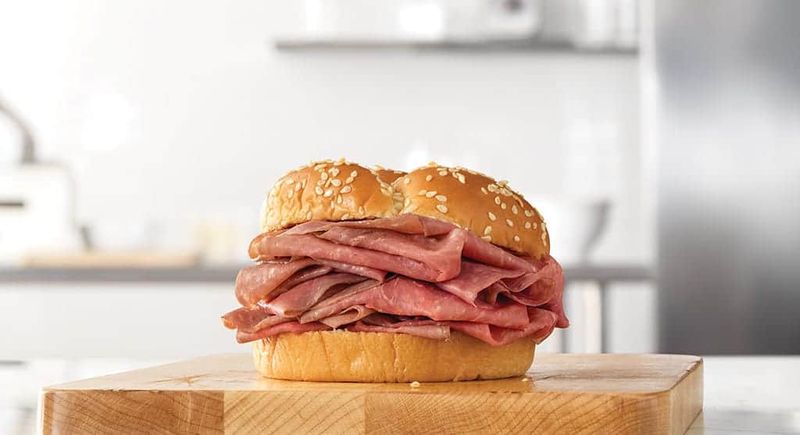
Savvy fast-food enthusiasts know that Arby’s Classic Roast Beef frequently stars in some of the chain’s best value deals. The sandwich serves as Arby’s promotional workhorse, appearing in countless “2 for” specials and combo meal discounts.
This marketing strategy uses the iconic sandwich to drive foot traffic during slower periods. Arby’s app users receive push notifications about these limited-time offers, creating a sense of urgency.
The approach has created a subculture of deal-tracking Arby’s fans who never pay full price. These customers plan their visits around promotions, sometimes stocking up on sandwiches during particularly good offers.
11. Vegetarians Need Not Apply

“We have the meats” isn’t just a slogan – it’s Arby’s defiant stance in the plant-based protein revolution. While competitors rush to add meat alternatives, Arby’s has publicly rejected the trend.
Former CEO Rob Lynch famously declared the chain would never offer plant-based versions of their classic sandwiches. This bold position differentiates Arby’s in a market where even Burger King embraced the Impossible Whopper.
The strategy appears to be working with their core audience. Arby’s has doubled down on meat-centricity while competitors scramble to accommodate changing dietary preferences, making a calculated bet on their carnivorous customer base.
12. The Great Meat Shortage Lawsuit
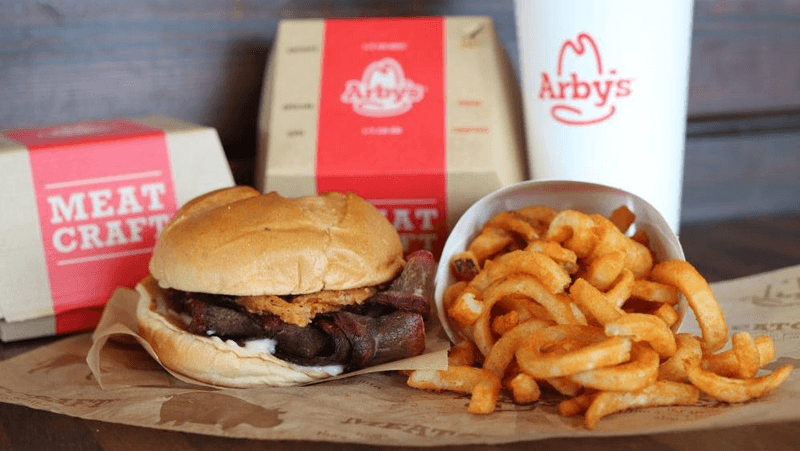
Expectations versus reality collided in 2023 when customers filed a class-action lawsuit claiming Arby’s advertisements showed sandwiches with nearly twice the meat actually served.
The legal complaint included side-by-side comparisons of advertised sandwiches alongside their allegedly meat-deprived real-world counterparts. This lawsuit joined similar actions against other fast-food chains accused of visual deception in marketing.
Food styling techniques that make products appear larger and more appealing came under legal scrutiny. The case highlighted the fine line between appetizing food photography and potentially misleading advertising, raising questions about consumer expectations in fast food.
13. Surprisingly Reasonable Nutrition Profile

For a fast-food indulgence, the Classic Roast Beef delivers unexpected nutritional balance. At approximately 360 calories and 14g of fat, it’s substantially lighter than many competing options.
The sandwich provides 23g of protein – nearly half the daily requirement for an average adult. It also contains beneficial nutrients like iron and calcium, though sodium levels remain high at over 900mg.
Health-conscious fast-food consumers often choose Arby’s roast beef as a protein-forward option when eating on the go. The relatively modest calorie count allows for side item additions without excessive caloric impact, making it a flexible choice for varied dietary needs.
14. Europeans Can’t Get Their Hands On It
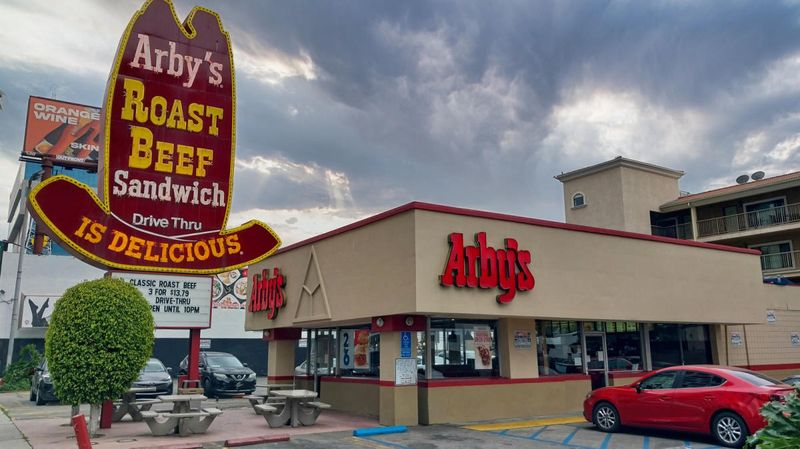
Craving an Arby’s roast beef sandwich in Paris or Rome? You’re out of luck. Despite expanding to countries like Canada, Turkey, and Saudi Arabia, Arby’s has yet to establish a European foothold.
This absence from European markets represents a curious gap in the chain’s international strategy. While McDonald’s golden arches dot European capitals, Arby’s distinctive hat logo remains unknown to most Europeans. Market analysts point to several potential barriers:
European preferences for local food traditions, different meat preparation expectations, and the chain’s distinctly American positioning. For now, Europeans must cross the Atlantic to experience the classic roast beef sandwich.
Leave a comment